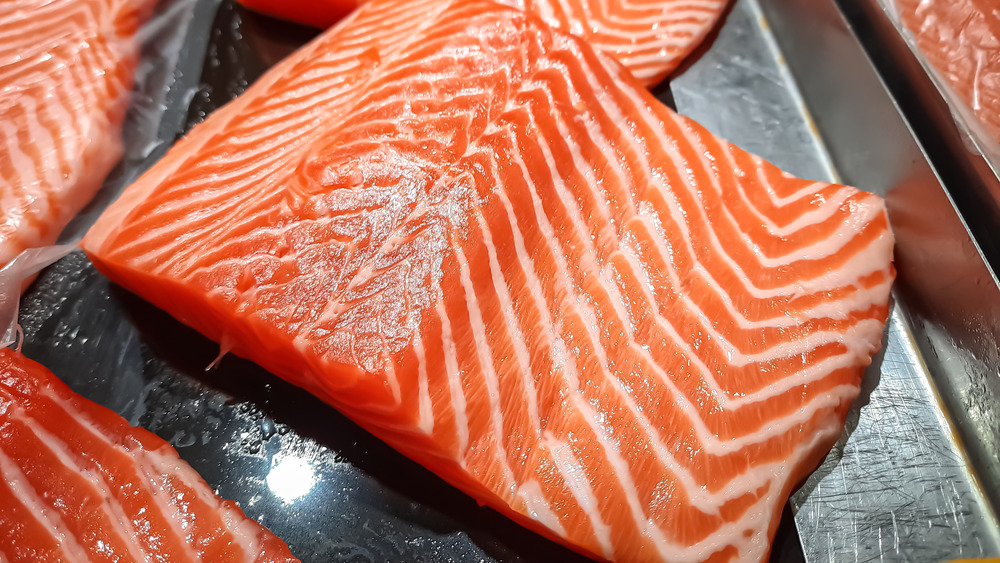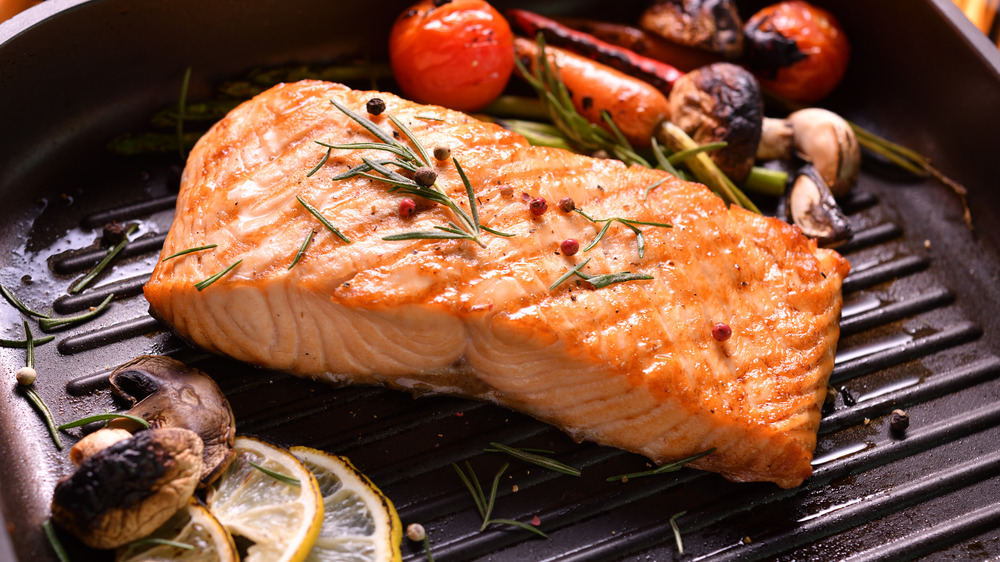The Big Difference Between Wild Salmon And Farmed Salmon
Eating salmon regularly comes with a ton of health benefits. The fatty fish contains high levels of omega-3 fatty acids, which the body cannot produce on its own, but needs to survive (via Harvard T.H. Chan School of Public Health). However, when shopping at the grocery store, you've probably noticed not all salmon is made in the same way. These days, much of the salmon available to consumers isn't caught in the wild, but bred in fish farms for human consumption (via Healthline). This process is called aquaculture and accounts for half the salmon sold worldwide.
Because each type of salmon comes from a vastly different source, nutritional values also differ. Wild salmon, which are caught in oceans, rivers, and lakes, eat other organisms in their natural environment. Farmed salmon, in contrast, eat a processed diet high in fat and protein in order to make larger fish. As a result, farmed salmon is much higher in calories and fat. A small fillet of wild salmon, for example, contains 131 fewer calories and half the fat as the same portion of farmed salmon, according to the Cleveland Clinic. Farmed salmon contains slightly more omega-3 fatty acids, but has much higher amounts of unhealthy, saturated fat.
Concerns about contaminants in farmed salmon
Research studies have found that farmed salmon have much higher levels of contaminants than wild salmon. Perhaps the most dangerous of these contaminants is polychlorinated biphenyls (PCBs), which have been linked to an increased risk of cancer. The U.S. Food & Drug Administration (FDA) sets limits for PCB residue found in foods and the Environmental Protection Agency (EPA) regulates levels in lakes, streams, and drinking water. To reduce exposure to contaminants, these organizations recommend trimming away fatty areas of fish, removing the skin before cooking and grilling, and baking or broiling fish rather than deep frying it (via the Mayo Clinic).
Antibiotic use in farmed fish has also raised concerns. Since aquaculture involves a high density of fish, farmed fish generally have higher risk of infections and are given antibiotics to combat that. Overexposure to antibiotics can result in resistance to their infection-fighting effects. While unregulated use of antibiotics in farmed fish has reportedly improved, it's not known how much is still being used, according to the Cleveland Clinic.
The bottom line? Both wild and farmed salmon have important nutrients the body needs and are considered healthy foods. However, more questions regarding health risks linger over farmed salmon than wild salmon. If you try to limit your intake of toxins and are concerned about antibiotic resistance, wild salmon is a better choice.


